|
The robot connects to a computer, which
keeps the pieces of the arm working together. This computer is the
controller. The controller functions as the "brain" of the robot. The
controller can also network to other systems, so that the robot may
work together with other machines, processes, or robots.
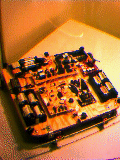 Given that the robot arm movement is appropriate to its application,
that the arm strength and rigidity meet the payload needs and that
servo drives provide the necessary speed of response and resolution, a
robot controller is required to manage the arm articulations, its End Effector, and the interface with the workplace. The simplest type of
control, still widely used, is "record-playback," or "lead-through".
An operator positions arm articulations to desired configurations. At
each desired location the articulation encoder positions are recorded
in memory. Step by step, an entire work-cycle sequence is recorded.
Then in playback mode the sequence is observed and modified.
Given that the robot arm movement is appropriate to its application,
that the arm strength and rigidity meet the payload needs and that
servo drives provide the necessary speed of response and resolution, a
robot controller is required to manage the arm articulations, its End Effector, and the interface with the workplace. The simplest type of
control, still widely used, is "record-playback," or "lead-through".
An operator positions arm articulations to desired configurations. At
each desired location the articulation encoder positions are recorded
in memory. Step by step, an entire work-cycle sequence is recorded.
Then in playback mode the sequence is observed and modified.
As applications become more challenging, some jobs require
continuous path control of an End Effector. For this action all
articulations must be programmed in speeds appropriate to the
particular task. This requires programming for the control of the
robot. Robots today have controllers run by programs -- sets of
instructions written in code. The program sets limits on what the
robot can do. These requirements call into play sophisticated
computer-based controllers and so-called robot languages. These
languages permit a kind of robot control known as hierarchical
control, in which decision making by the robot takes place on several
levels. These levels are interconnected by feedback mechanisms that
inform the next higher level of the status of previous actions. The
advantage of a general-purpose robot arm is that it can be programmed
to do many jobs. The disadvantage is that the programming tends to be
a job for highly paid engineers. Even when a factory robot can perform
a task more efficiently than a person, the job of programming it and
setting up its workplace can be more trouble than its worth. Commotion
Systems, a new California firm, is developing easier ways to program
robots using pre-designed software modules. For now though, the job of
"training" robots is still one of the main reasons that they are not
used more. In the future, controllers with Artificial Intelligence
could allow robots to think on their own, even program themselves.
This could make robots more self-reliant and independent. Angelus
Research has designed an intelligent motion controller for robots that
mimics the brain's three-level structure, including instinctive,
behavioral, and goal levels. The controller, which can be used in
unpredictable circumstances, uses a Motorola 68HC11 microprocessor.
Feedback control is a
means of getting a system (in our case a robot) to achieve and
maintain a desired state by continuously comparing its current and
desired state. The desired state is also called the goal
state of the system. Note that it can be an external or internal
state: for example, a thermostat monitors and controls external state
(the temperature of the house), while a robot can control its internal
state (e.g., battery power, by recharging at proper times) or external
state (e.g., distance from a wall). If the current and desired state
are the same, the control system does not need to do anything. But if
they are not, how does it decide what to do? That is what the design
of the controller is all about. A control system must first find the
difference between the current and desired states. This difference is
called the error, and the goal of any control system is to
minimize that error.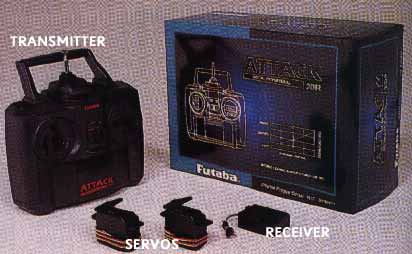 In some systems, the only information available about the error is
whether it is 0 or non-0, i.e., whether the current and desired states
are the same. This is very little information to work with, but it is
still a basis for control and can be exploited in interesting ways.
Additional information about the error would be its magnitude,
i.e., how "far" the current state is from the desired state. Finally,
the last part of the error information is its direction,
i.e., is the current state too close or too far from the desires state
(in whatever space it may be). Control is easiest if we have frequent
feedback providing error magnitude and direction. Notice that the
behavior of a feedback system oscillates around the desired state. In
the case of a thermostat, the temperature oscillates around the
set point, the desired setting. Similarly, the robot's movement
will oscillate around the desired state, which is the optimal distance
from the wall. How can we decrease this oscillation? We can use a
smoother/larger turning angle, and we can also use a range
instead of a set point distance as the goal state. Now what
happens when you have sensor error in your system? What if your sensor
incorrectly tells you that the robot is far from a wall, but in fact
it is not? What about vice versa? How might you address these issues?
Feedback control is also called closed loop control because
it closes the loop between the input and the output, i.e., it provides
the system with a measure of "progress."
In some systems, the only information available about the error is
whether it is 0 or non-0, i.e., whether the current and desired states
are the same. This is very little information to work with, but it is
still a basis for control and can be exploited in interesting ways.
Additional information about the error would be its magnitude,
i.e., how "far" the current state is from the desired state. Finally,
the last part of the error information is its direction,
i.e., is the current state too close or too far from the desires state
(in whatever space it may be). Control is easiest if we have frequent
feedback providing error magnitude and direction. Notice that the
behavior of a feedback system oscillates around the desired state. In
the case of a thermostat, the temperature oscillates around the
set point, the desired setting. Similarly, the robot's movement
will oscillate around the desired state, which is the optimal distance
from the wall. How can we decrease this oscillation? We can use a
smoother/larger turning angle, and we can also use a range
instead of a set point distance as the goal state. Now what
happens when you have sensor error in your system? What if your sensor
incorrectly tells you that the robot is far from a wall, but in fact
it is not? What about vice versa? How might you address these issues?
Feedback control is also called closed loop control because
it closes the loop between the input and the output, i.e., it provides
the system with a measure of "progress."
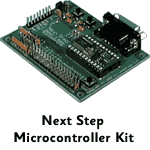 The
alternative to closed loop control is open loop control. This
type of control does not require the use of sensors, since state is
not fed back into the system. Such systems can operate (perform
repetitive, state-independent tasks) only if they are extremely well
calibrated and their environment does not change in a way that affects
their performance. We have talked about feedback control so far, but
there is also an important notion of feed forward control. In
such a system, the controller determines set points and sub-goals for
itself ahead of time, without looking at actual state data. The
alternative to closed loop control is open loop control. This
type of control does not require the use of sensors, since state is
not fed back into the system. Such systems can operate (perform
repetitive, state-independent tasks) only if they are extremely well
calibrated and their environment does not change in a way that affects
their performance. We have talked about feedback control so far, but
there is also an important notion of feed forward control. In
such a system, the controller determines set points and sub-goals for
itself ahead of time, without looking at actual state data.
Reactive control is based on a
tight loop connecting the robot's sensors with its effectors. Purely
reactive systems do not use any internal representations of the
environment, and do not look ahead: they react to the current
sensory information. Thus, reactive systems use a direct mapping
between sensors and effectors, and minimal, if any, state information.
They consist of collections of rules that map specific situations
to specific actions. If a reactive system divides its
perceptual world into mutually exclusive or unique
situations, then only one of those situations can be triggered by any
sensory input at any one time, and only one action will be activated
as a result. This is the simplest form of a reactive control system.
It is often too difficult to split up all possible situations this
way, or it may require unnecessary encoding. Consider the case of
multiple sensors: to have mutually-exclusive sensory inputs, the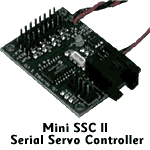 controller must encode rules for all possible sensory combinations.
There is an exponential number of those. This is, in fact, the robot's
entire sensory space (as we defined earlier in the semester). This
space then needs to be mapped to all possible actions (the action
space), resulting in the complete control space for that robot.
Although this mapping is done while the system is being designed,
i.e., not at run-time, it can be very tedious, and it results in a
large look up table which takes space to encode/store in a robot, and
can take time to search, unless some clever parallel look up technique
is used. In general, this complete mapping is not used in
hand-designed reactive systems. Instead, specific situations trigger
appropriate actions, and default actions are used to cover all other
cases. Human designers can effectively reduce the sensory space to
only the inputs/situations that matter, map those to the appropriate
actions, and thus greatly simplify the control system. If the rules
are not triggered by mutually-exclusive conditions, more than one rule
can be triggered in parallel, resulting in two or more different
actions being output by the system. Deciding among multiple actions or
behaviors is called arbitration, and is in general a
difficult problem. Arbitration can be done based on
controller must encode rules for all possible sensory combinations.
There is an exponential number of those. This is, in fact, the robot's
entire sensory space (as we defined earlier in the semester). This
space then needs to be mapped to all possible actions (the action
space), resulting in the complete control space for that robot.
Although this mapping is done while the system is being designed,
i.e., not at run-time, it can be very tedious, and it results in a
large look up table which takes space to encode/store in a robot, and
can take time to search, unless some clever parallel look up technique
is used. In general, this complete mapping is not used in
hand-designed reactive systems. Instead, specific situations trigger
appropriate actions, and default actions are used to cover all other
cases. Human designers can effectively reduce the sensory space to
only the inputs/situations that matter, map those to the appropriate
actions, and thus greatly simplify the control system. If the rules
are not triggered by mutually-exclusive conditions, more than one rule
can be triggered in parallel, resulting in two or more different
actions being output by the system. Deciding among multiple actions or
behaviors is called arbitration, and is in general a
difficult problem. Arbitration can be done based on
-
fixed priority hierarchy
(processes have pre-assigned priorities)
-
a dynamic hierarchy (process
priorities change at run-time)
-
learning (process priorities may
be initialized or not, and are learned at run-time, once or
repeatedly/dynamically)
If a reactive system needs to
support parallelism, i.e., the ability to execute multiple rules at
once,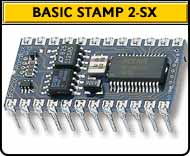 the underlying programming language must have the ability to
multi-task, i.e., execute several processes/pieces of code in
parallel. The ability to multi-task is critical in reactive systems:
if a system cannot monitor its sensors in parallel, but must go from
one to another in sequence, it may miss some event, or at least the
onset of an event, thus failing to react in time. Now that we
understand the building blocks of a reactive system (reactive rules
coupling sensors and effectors, i.e., situations and actions), we need
to consider principled ways of organizing reactive controllers. We
will start with the best known reactive control architecture, the
Subsumption Architecture, introduced by Rod Brooks at MIT in 1985.
the underlying programming language must have the ability to
multi-task, i.e., execute several processes/pieces of code in
parallel. The ability to multi-task is critical in reactive systems:
if a system cannot monitor its sensors in parallel, but must go from
one to another in sequence, it may miss some event, or at least the
onset of an event, thus failing to react in time. Now that we
understand the building blocks of a reactive system (reactive rules
coupling sensors and effectors, i.e., situations and actions), we need
to consider principled ways of organizing reactive controllers. We
will start with the best known reactive control architecture, the
Subsumption Architecture, introduced by Rod Brooks at MIT in 1985.
The following are the guiding
principles of the architecture:
-
Systems are built from the bottom up
-
Components are task-achieving actions/behaviors (not functional
modules)
-
Components can be executed in parallel
-
Components are organized in layers, from the bottom up
lowest layers handle most basic tasks
-
Newly added components and layers exploit the existing ones
-
Each component provides and does not disrupt a tight coupling
between sensing and action
-
There is no need for internal models: "the world is its own best
model"
Here is a rough image of how the
system works: If we number the layers from 0 up, we can assume that
the 0th layer is constructed, debugged, and installed first. As layer
1 is added, layer 0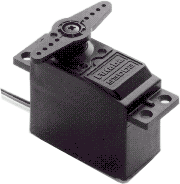 continues to function, but may be influenced by layer 1, and so on up.
If layer 1 fails, layer 0 is unaffected. When layer 1 is designed,
layer 0 is taken into consideration and utilized, i.e., its existence
is subsumed, thus the name of the architecture. Layer 1 can
inhibit the outputs of layer 0 or suppress its inputs.
Subsumption systems grow from the bottom up, and layers can keep being
added, depending on the tasks of the robot. How exactly layers are
split up depends on the specifics of the robot, the environment, and
the task. There is no strict recipe, but some solutions are better
than others, and most are derived empirically. The inspiration behind
the Subsumption Architecture is the evolutionary process,
which introduces new competencies based on the existing ones. Complete
creatures are not thrown out and new ones created from scratch;
instead, solid, useful substrates are used to build up to more complex
capabilities.
continues to function, but may be influenced by layer 1, and so on up.
If layer 1 fails, layer 0 is unaffected. When layer 1 is designed,
layer 0 is taken into consideration and utilized, i.e., its existence
is subsumed, thus the name of the architecture. Layer 1 can
inhibit the outputs of layer 0 or suppress its inputs.
Subsumption systems grow from the bottom up, and layers can keep being
added, depending on the tasks of the robot. How exactly layers are
split up depends on the specifics of the robot, the environment, and
the task. There is no strict recipe, but some solutions are better
than others, and most are derived empirically. The inspiration behind
the Subsumption Architecture is the evolutionary process,
which introduces new competencies based on the existing ones. Complete
creatures are not thrown out and new ones created from scratch;
instead, solid, useful substrates are used to build up to more complex
capabilities.
Behavior-based systems
(BBS) use behaviors as the underlying module of the system, i.e., they
use a behavioral decomposition. Behaviors can vary greatly from one
BBS to another, but typically have the following properties:
-
Behaviors are feedback
controllers
-
Behaviors achieve specific
tasks/goals (e.g., avoid-others, find-friend, go-home)
-
Behaviors are typically executed
in parallel/concurrently
-
Behaviors can store state and be
used to construct world models/representation
-
Behaviors can directly connect
sensors and effectors (i.e., take inputs from sensors and send
outputs to effectors)
-
Behaviors can also take inputs
from other behaviors and send outputs to other behaviors (this
allows for building networks)
-
Behaviors are typically
higher-level than actions (go-home rather than
turn-left-by-37.5-degrees)
-
Behaviors are typically
closed-loop but extended in time (this is often a consequence of #7
above)
-
When assembled into distributed
representations, behaviors can be used to look ahead but at a
time-scale comparable with the rest of the behavior-based system
Behavior-based systems are not
limited in the ways that reactive systems are. As a result,
behavior-based systems have the following key properties:
-
The ability to react in
real-time
-
The ability to use
representations to generate efficient (not only reactive) behavior
-
The ability to use a uniform
structure and representation throughout the system (so no
intermediate layer)
The key challenge is in how
representation (i.e., any form of world model) can be effectively
distributed over t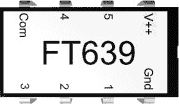 he
behavior structure. In order to avoid the pitfalls of deliberative
systems, the representation must be able to act on a time-scale that
is close if not the same as the real-time parts of the system.
Similarly, to avoid the pitfalls of the hybrid systems approach, the
representation needs to use the same underlying behavior structure as
the rest of the system. Note that behavior-based systems can have
reactive components to them, i.e., not every part of a behavior-based
system needs to be involved with representational computation. In
fact, many behavior-based systems did not use complex representations
at all. As long as they use behaviors (not just rules), they are BBS. he
behavior structure. In order to avoid the pitfalls of deliberative
systems, the representation must be able to act on a time-scale that
is close if not the same as the real-time parts of the system.
Similarly, to avoid the pitfalls of the hybrid systems approach, the
representation needs to use the same underlying behavior structure as
the rest of the system. Note that behavior-based systems can have
reactive components to them, i.e., not every part of a behavior-based
system needs to be involved with representational computation. In
fact, many behavior-based systems did not use complex representations
at all. As long as they use behaviors (not just rules), they are BBS. |